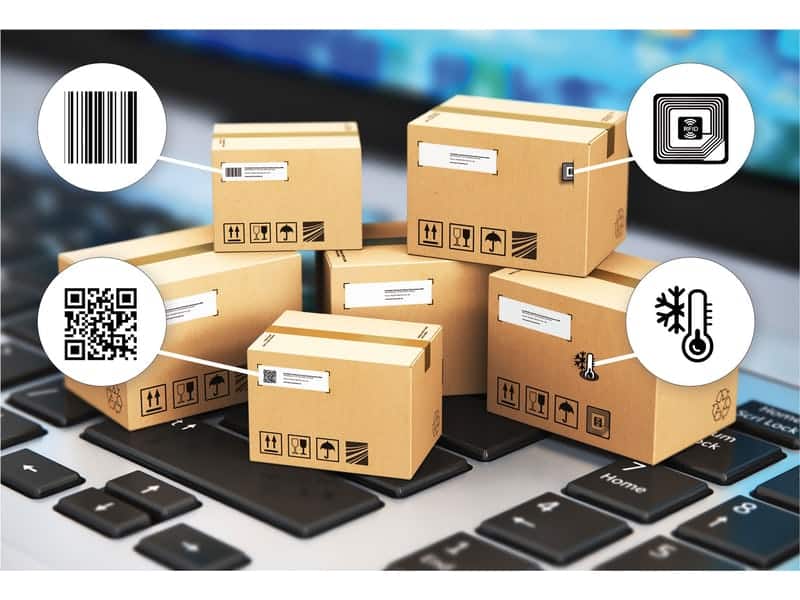RFID tags
RFID tags are based on wireless communications (magnetic field or electromagnetic wave) that can provide instant information on temperature, relative humidity, and power and supply information as the product moves through the supply chain, therefore, it increases the traceability and safety of food.
RFID quality is easier to identify product than traditional tags and barcodes, has relatively large data storage capacity, has a longer read range (up to decades or even more than 100 meters), and requires no visual contact.
RFID tags can be embedded in an item, placed inside food packaging, or injected into animal bodies. So RFID tags are now an alternative to barcodes.
In this article, the Vira team intends to provide a brief description of the advantages and disadvantages of RFID tags used in the smart packaging industry.
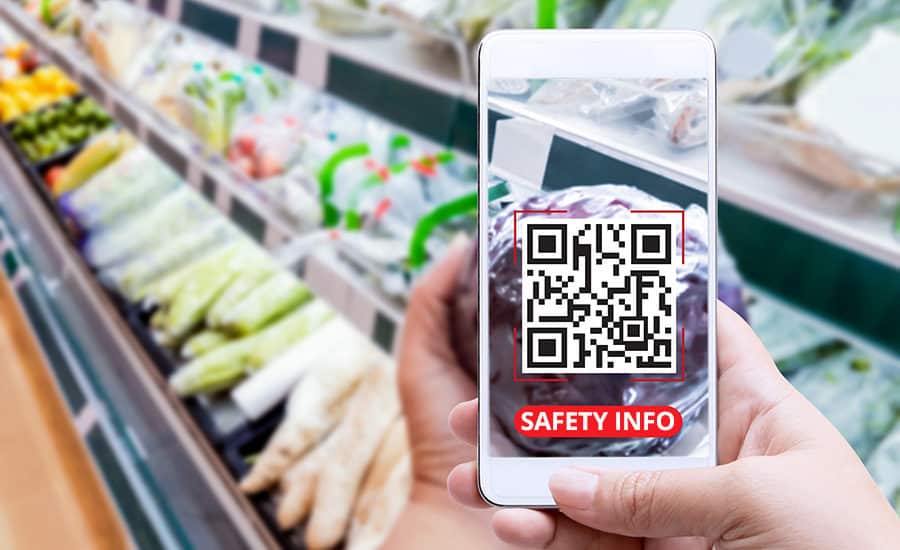
Types of RFID tags
Each RFID tag can be classified as inactive, semi-passive, or active depending on the power supply mode.
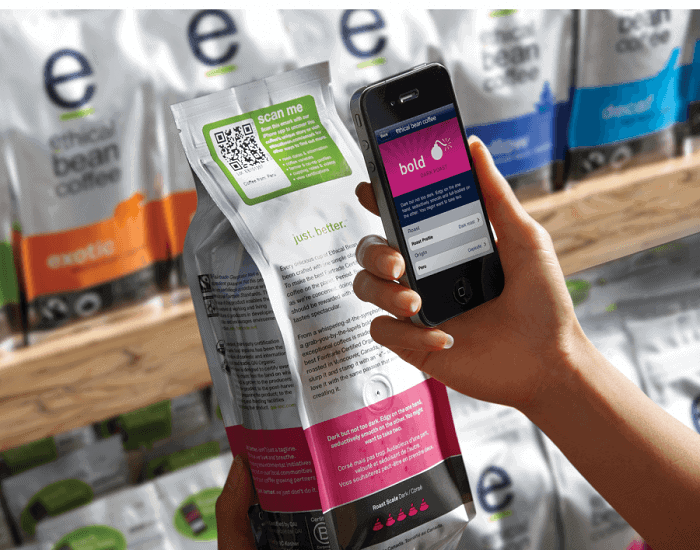
Disable tags
Passive labels do not contain internal energy sources and are fed by electromagnetic induction in magnetic fields that are generated near the reader (consumer).
Compared to the other two types of tags, passive tags have a relatively short reading distance and a small number of tags can be read simultaneously. However, this type of label, in addition to being small, light and inexpensive, has a long service life, so these labels are a potential candidate for the development of low-cost devices.
Semi-passive tags
Semi-passive tags have a local power supply that is used only to power the chip. These tags still rely on the reader to emit electromagnetic waves and often remain inactive unless they are awakened by the reader. Therefore, the power supply is often inactive, which increases the lifespan of the tags.
Unlike passive tags, semi-passive tags have a wider range of work.
Active tags
Active tags have an embedded battery that is used to power the chip and transmit signals to the reader. Compared to the other two types of tags, these tags have the widest reading range (more than 50 meters) and many tags can be read simultaneously.
However, the widespread use of active labels is limited because they are more expensive than passive or semi-passive labels and have a limited lifespan (depending on battery life).
Integration of RFID tags with other sensors used in smart packaging
The figure below shows the basic RFID systems and the different operating frequencies. To add new capabilities to RFID tags, various types of sensors (such as TTI, humidity sensors, and gas sensors) have been integrated into RFID tags that can be used to measure, communicate, and monitor food packaging space.
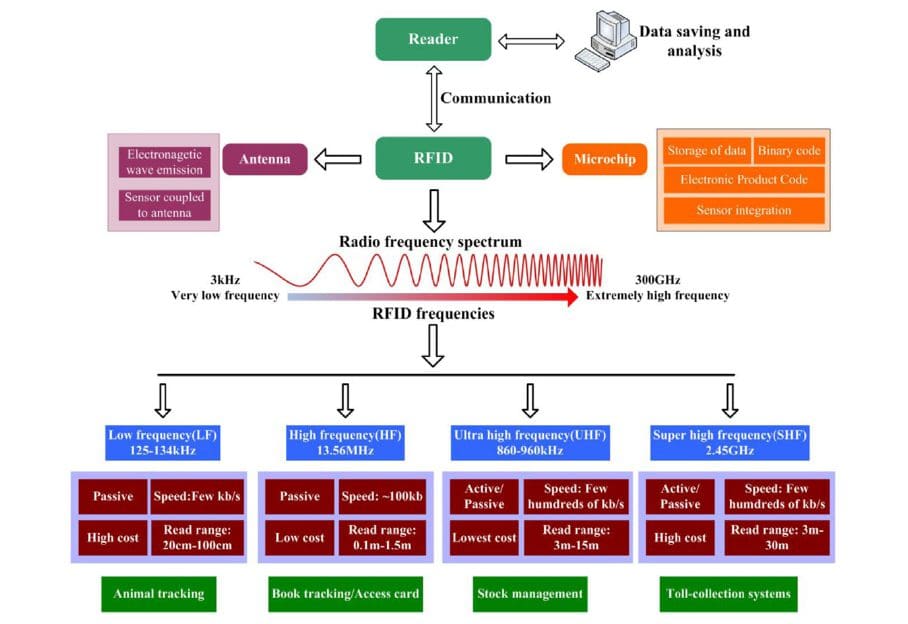
These labels provide real-time data on food quality, safety and history through the supply chain. RFID tags with sensors are also a major driving force for the use of RFID technology in smart packaging systems.
Passive tags only provide information about identification and tracking. It is essential to use semi-passive or active labels to measure applications.
However, integrating sensors into RFID tags also faces challenges, such as the effect that increasing the cost of tags may have on the final cost of food products, which can lead to reduced sales.
In addition, researchers should determine how to meet the functional requirements of RFID sensor tags and avoid direct contact between food and tags by optimizing the elements used in tags (such as antennas, chips, or sensors). In addition, the service life of RFID tags is limited, as the sensors require power to function properly.
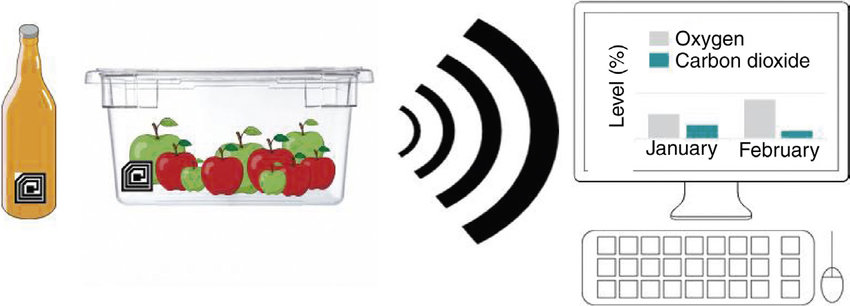
Challenges of RFID tags
All of these challenges should be explored in the future to facilitate the widespread adoption of RFID tags in food packaging. However, due to their relatively high cost (approximately $ 0.2 to $ 0.3 per label), their use is limited, and some companies have found that moving to RFID technology is unacceptable. To overcome these barriers, future studies are expected to be conducted with the aim of reducing the cost of RFID tags as much as possible.
